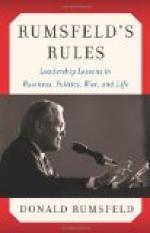On Wednesday morning Sir Redvers Buller reported a considerable force of the enemy still on and under Bulwana Mountain, to the east of Ladysmith. His task and that of his Army Corps is to inflict what damage he can upon that force of the enemy, taking from Sir George White whatever assistance that officer and his troops can give, and leaving to the auxiliary services the work of attending to the sick and wounded in Ladysmith and the provisioning of the troops and the town. A part of Sir George White’s force is, no doubt, still fit for action so soon as its supply of cartridges can be renewed. The most effective plan would probably be to leave a strong rearguard at Nelthorpe, and to push on with the main body and the bulk of the artillery through Ladysmith to the assault of one of the Boer positions on the north side of the town. This would compel the Boers to abandon Bulwana, perhaps to leave behind their heavy guns; would, if successful, prevent their retreat by the direct road into the Free State, and might greatly embarrass or, at least, harass their retreat through the Biggarsberg.
The defeat of the Boer army in Natal and the relief of Ladysmith is a great blow to the Boer cause. It frustrates the hopes of the Boers for the one great success on which they were to some extent justified in counting, and makes an end of their plan of campaign.
A few days will be needed to repair the railway from the Tugela to Ladysmith, and to build a temporary railway bridge at Colenso. By that time the force of Sir George White and Sir Redvers Buller will be rested, refreshed, and reorganised, forming an army of from thirty-five thousand to forty thousand men. In the Free State Lord Roberts has probably forty-five thousand. The collapse of the Boer invasion of Cape Colony points to the early reopening of the railways from Naauwpoort and Sterkstrom to Norval’s Pont and Bethulie, the repair of the railway bridges over the Orange River, and the concentration at Bloemfontein of sixty thousand men, with the railway from the Orange River working and guarded behind them, possibly with




